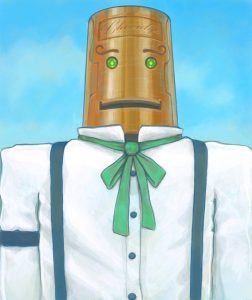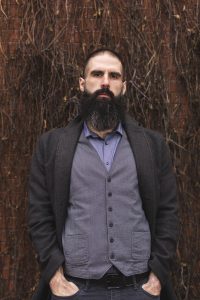 Today, we’ve got another interview with one of our I Didn’t Break the Lamp authors. Blake Jessop is a returning author, who also had a story in Battling in All Her Finery!
Today, we’ve got another interview with one of our I Didn’t Break the Lamp authors. Blake Jessop is a returning author, who also had a story in Battling in All Her Finery!
DV: Tell us a bit about yourself!
Blake Jessop: I’m a thirty-eight-year-old Canadian short story writer. I did a master’s in creative writing at the University of Adelaide, and my style is a constant push and pull between fancy MFA prose and a profound desire to blow things up with a heavy metal soundtrack playing in the background.
DV: What inspired you to write “End User Agreement” for I Didn’t Break the Lamp?
BJ: I used the Mad Scientist Journal’s anthology theme as a writing prompt … and came up completely blank. I couldn’t think of a way to make an imaginary acquaintance cross over into the real world. That got me thinking about what imaginary friends really are, and why we need them.
I love writing about artificial intelligence, so I started toying with just how real the imaginary friend might be. Trying to figure out what would qualify an AI as “real” forces us to confront what exactly makes us real. In the end, I decided that regardless of how corporeal the imaginary acquaintance might be, what matters is whether or not you believe it is … and what you do about it.
DV: Emily Theory reads very realistically, especially for a character in a near-future setting. Was she inspired by a real life person or multiple people?
I taught a psychology lecture about cognitive biases at McGill University for a few years. While researching it, I discovered attachment therapy, and its horrible failure to understand why and how humans bond really stuck with me. Emily, the ex-Pentecostal hacker with attachment anxiety and a severe pizza addiction, started taking shape then and there. She was a character without a story until “End User Agreement,” so the other parts of her personality reflect my own fears about loneliness, longing, and finding a place in the world.
For the record, the unpleasant specifics about how attachment therapy works are real, and they made it easy to build both Emily’s verve and her insecurities. Good story ideas are really all we have to thank attachment therapy for; it was a stupid concept and richly deserves its place in the dustbin of bad ideas.
DV: Your story involves an AI who has gained sentience as the “imaginary” acquaintance. With the advances in machine learning, how realistic do you speculate this could be?
BJ: “End User Agreement” is an adventure story more than hard sci-fi, but I tried to keep the technological details as reasonable as possible. Drones that can deliver pizza or decide who to kill all by themselves are both things that either Amazon or the US military are working on right now. I’m personally optimistic that agreement between human and machine intelligence is possible, so I tend to write about it positively. With any luck, the first really sentient AIs will have someone nice like Emily to interact with, and will decide they’re better off letting us live.
There are a lot of scarier ways this could play out, however, and anyone who wants to know more should check out Nick Bostrom’s “Superintelligence,” which is deeply researched, often terrifying, and a lot of fun to read.
DV: If you had an imaginary friend growing up, what was their name, and what were they like?
I can’t ever remember having an imaginary friend of the magnitude of a wise-cracking tiger from “Calvin and Hobbes,” and I feel a little sad that I didn’t. On the other hand, all I’ve ever had to do to start hearing voices is close my eyes; I just give them names and write them down. I don’t have as hard a time telling them apart from the real world as Emily does … but I haven’t dreamt up any characters that accomplish quite as much as hers do, either.
DV: What’s on the horizon for you?
It’s been a good year so far in short story writing! I told a modern fairy tale about a Soviet engineer and a rusalka, re-told the fable of Theseus and the Minotaur on Venus, and feel very lucky that DreamForge Magazine took a chance on a really crazy cyberpunk story I wrote about elephants, punk rock, and renegade gene sequencing. I am also giddy with excitement (rare for me, look at the beard) to be working with Mad Scientist Journal again, after debuting with them last year in Battling in All Her Finery. These anthology themes keep dragging my favorite characters out of me. I also have three Twitter followers @everydayjisei, if anyone wants to get in touch to talk about robots!
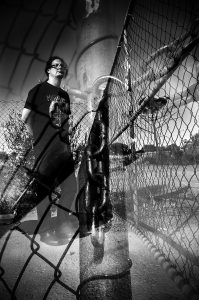


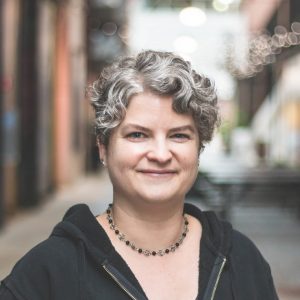 Today, we’re talking with E.D.E. Bell, author and publisher, who has a story in I Didn’t Break the Lamp!
Today, we’re talking with E.D.E. Bell, author and publisher, who has a story in I Didn’t Break the Lamp!


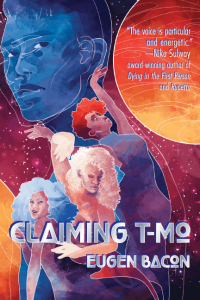 Claiming T-Mo
Claiming T-Mo Today, we’ve got another interview with one of our I Didn’t Break the Lamp authors. Blake Jessop is a returning author, who also had a story in Battling in All Her Finery!
Today, we’ve got another interview with one of our I Didn’t Break the Lamp authors. Blake Jessop is a returning author, who also had a story in Battling in All Her Finery!